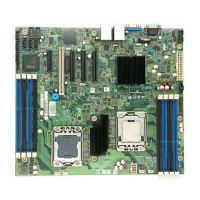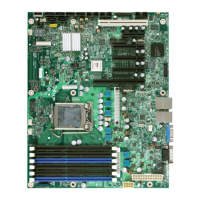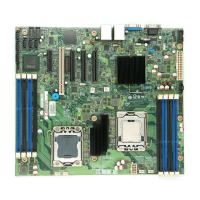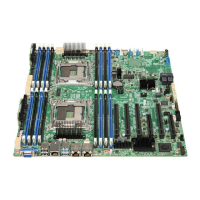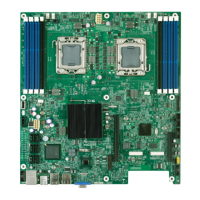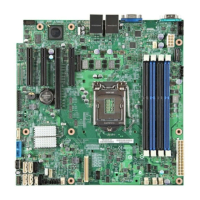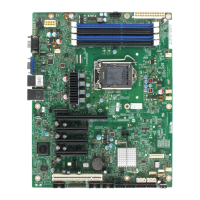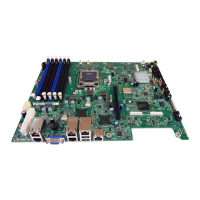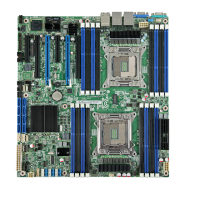Product Overview Intel® Server Board SE7520BD2 Technical Product Specification
16 Revision 1.3
1 Dual Rank, 1 Single Rank Single Rank Dual Rank Empty
2 Dual Rank Dual Rank Dual Rank Empty
3 Single Rank Single Rank Single Rank Single Rank
1 Dual Rank, 2 Single Rank Single Rank Single Rank Dual Rank
2 Dual Rank, 1 Single Rank Single Rank Dual Rank Dual Rank
3 Dual Rank Dual Rank Dual Rank Dual Rank
Table 4. DDR-1 333-MHz Memory Population
DIMM Configuration DIMM1 DIMM2 DIMM3
1 Single Rank Single Rank Empty Empty
1 Dual Rank Dual Rank Empty Empty
2 Single Rank Single Rank Single Rank Empty
1 Dual Rank, 1 Single Rank Single Rank Dual Rank Empty
2 Dual Rank Dual Rank Dual Rank Empty
3 Single Rank Single Rank Single Rank Single Rank
2.8.3 Single-Channel Operation
The Server Board SE7520BD2 also supports single-channel DIMM operation. This is where one
DIMM is populated in slot 1 of either memory channel A or B. Population in other slots is not
supported. The minimal size of memory that will be considered for this testing is 128 MB. Single
channel DIMM setups are not part of the test setups listed for the qualification process;
however, they will be tested to ensure their functionality during all phases of the project.
2.8.4 ECC
The ECC used for DRAM provides Intel® SDDC x4 technology for x4 SDRAMs. DRAMs that
are x8 use the same algorithm but will not have Intel® SDDC x4 technology, since at most only
four bits can be corrected with this ECC.
The method provides more ECC bits so each ECC word can correct more than a single-bit
failure. This is possible because different mathematical algorithms provide multiple-bit correction
with the right number of data bits and ECC bits. For example, a 144-bit ECC word that consists
of 128 data bits and 16 ECC bits can be used to correct up to 4 bit errors within certain bit fields
of data. These four bits must be adjacent, not random. Even though the ratio of the ECC bits to
data bits is the same as the previous example (16/128 vs. 8/64), the longer ECC word allows for
a correction and detection algorithm that is more efficient.
2.8.4.1 DIMM Sparing Function
To provide a more fault tolerant system, the MCH includes specialized hardware to support fail-
over to a spare DIMM device in the event that a primary DIMM in use exceeds a specified
threshold of runtime errors. One of the DIMMs installed per channel will not be used, but kept in
reserve. In the event of significant failures in a particular DIMM, it and its corresponding partner
in the other channel (if applicable), will, over time, have its data copied over to the spare
DIMM(s) held in reserve. When all the data has been copied, the reserve DIMM(s) will be put
into service and the failing DIMM will be removed from service. Only one sparing cycle is
supported. If this feature is not enabled, then all DIMMs will be visible in normal address space.
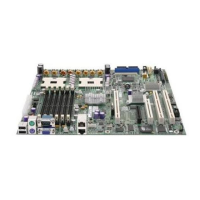
